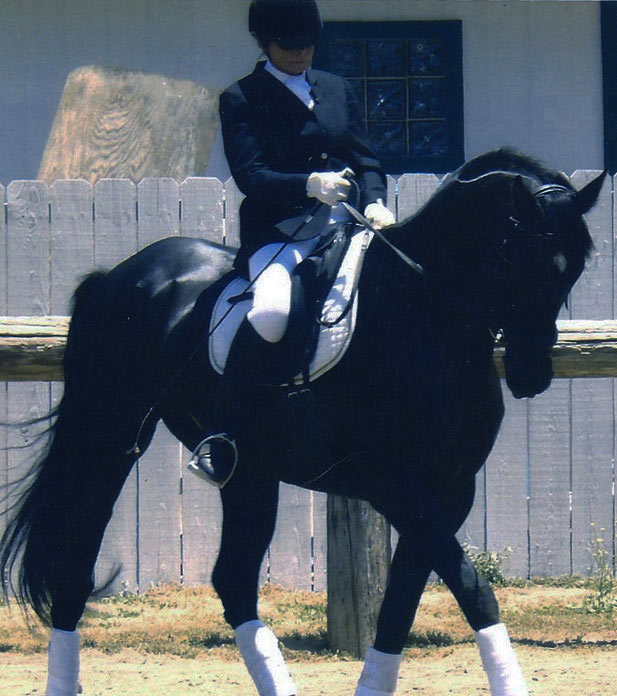
“When we first meet I never know if I am looking at a future Grand Prix rider or someone who simply loves learning about horses and I may be looking at both.”
My ideal student is one that wants to learn. Learn about horses, their soul and their mannerisms. I want them to learn about their impact as a rider, physically and mentally, the impact of their surroundings, the connection between horse and rider and the horses’ feelings.
I want the student to want to understand the use and impact of the riders’ body weight and how it affects the horse, learning how to recognize the way they ride may cause the horse to be out of balance. The student should want to know, not only the look of riding, but the cause and effect of riding. A student should want to know about how the angles of the horse’s body encourage some sports and discourage other sports.
The horses’ needs are extremely important. Recognizing the signs of the horses’ well-being, physically and mentally, prior to mounting the horse, will provide for a better riding experience. Saddle fitting, which is a fairly new subject, can also determine the horse and riders’ experience. An ill-fitting saddle could cause the horse to be uncomfortable and have adverse reactions. It can also cause long term physical and mental damage to the horse.
I want a student that cares deeply about learning and realizes that it is tireless and continuing. I want a student that wants more than a satin ribbon.
Getting Started
With a beginning rider, I ask for their goals, evaluate their body type, ask them about other sports they play, do they play an instrument of any kind.
Next, I decide what horse would be most appropriate for them to ride and begin by teaching them some very basic skill on the ground with the horse and I build from there.
My idea is I never know if I am looking at a future Grand Prix rider or someone who simply loves learning about horses and I may be looking at both.
With a more advanced rider, I want to know where they want to go as a rider. In this way, I can help develop in their skill set. If working with the riders’ own horse, I can help develop their horse into a greater dream. If working with my school horses and I know some information about their horse, I will be able to show them how to transfer the information from my school horse and use it for their own horse.
If working with their own horse, I begin by evaluating the horses’ muscle development or lack of development in some cases. I look for body type for the sport, muscle atrophy and hoof angles. The goal of the rider must match the type of the horse for that sport. If horse and rider are a match, I explain to the owner my plan to help their horse become the horse they hope to have.
Choosing a Discipline
The disciplines taught are multiple, but the basic one applied is Dressage. Meaning, the basics of Dressage is the basis of all training. The horse is developed for Dressage performance, Jumping performance, Barrel racing and non-Quarter horse style western pleasure (where the horse goes straight instead of crooked).
Lesson are tailored to the individuals needs and goals. I take my rider from where they are, to where they want to go. This is a key part of the evaluation and the reason I ask for the riders’ goal and what they want to do with the horse.